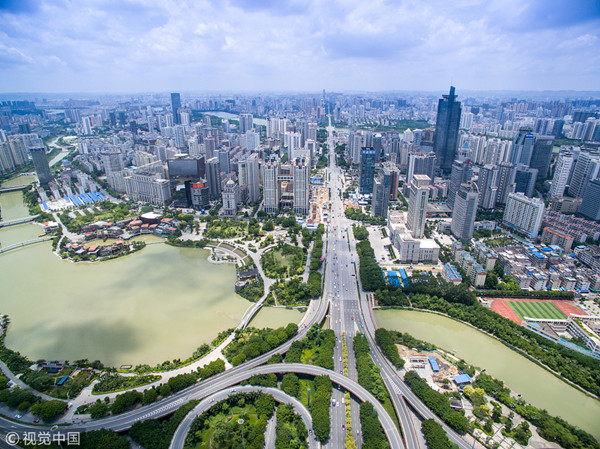Nanning
Nanning, the capital of Guangxi Zhuang autonomous region, is located in Southern Guangxi in the sub-tropical region with an area of 22,293 square kilometers; it is situated in the middle of Nanning Basin through which the Yongjiang River flows.
Nanning enjoys a favorable geographical location in Southwestern China, connecting the Indo-China Peninsula to the west and Guangdong, Hong Kong, Macao and Hainan province to the east, making it not only an important economic center along the Beibu Gulf, but also a rapidly growing gateway city to Southeast Asia in the southern and southwestern parts of China.
The city is only 104,173 and 204 kilometers respectively to the Ports of Qinzhou, Fangcheng and Beihai, and only 204 and 230 kilometers respectively to the cities of Dongxing and Pingxiang bordering Vietnam. The city is also an intersection for four key railways, namely, Hunan-Guangxi Railway, Guizhou-Guangxi Railway, Litang-Zhanjiang Railway and Nanning-Kunming Railway, making the city an important hub in Southwestern China. The completion of the 2nd Phase Project of dredging Xijiang River enables thousand-ton ships to sail directly from Nanning to Hong Kong and Macao via the Yongjiang River, a branch of the Xijiang River.

Nanning is situated in the middle of Nanning Basin through which the Yongjiang River flows. [Photo/VCG]
As an important gateway to Southeast Asia for Southwestern China, Nanning is a hub, a regional center and an opening city that plays an active role in the communication between China and ASEAN countries. It is becoming a booming economic zone and a hot spot for foreign investment in China. With its rapid urban development, Nanning attaches great importance to improving natural environment and also enjoys the reputation of being known as "the Green City of China" due to the its green coverage.
Nanning is a city where Zhuang ethnic group live in compact communities, and also the only city among all autonomous regions in China featuring a southern flavor, along with open coastal areas. Thirty-five ethnic groups live in compact communities in Nanning, including people of Zhuang, Han, Yao, Hui, Miao, Dong, and Manchu. Zhuang people make up 56.3 percent of the total population.


